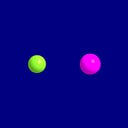Pseudohalogen compounds and Pseudohalides.
There are some uni-negative groups or ions which exhibits certain similar characteristics of halide ions, but they are not halide ions.
Such type of ions or groups are called pseudohalides or pseudohalide ions, and their corresponding compounds are called pseudohalogens compounds.
What are Pseudohalides ?
There are many ions which behave as halide ions. The well known pseudohalides are, cyanide ( CN– ), cyaphide (cp –), isocyanide (NC –), hydroxide bioxide (OH –), hydrosulfide bisulfide ( SH –), cyanate ( OCN –), Isocyanate ( NCO –), fulminate ( CNO –), thiocyanate ( SCN –), isothiocyanate ( NCS –) , hypothiocyanite ( OSCN –), nitrite (NO2 — ), tetracarbonylcobalt(1-) [ Co ( CO ) 4] , trinitromethanide [ C( NO2 ) 3 –] , and tricyanomethanide [C( CN ) 3 –] etc.
What are Pseudohalogen compounds ?
The corresponding pseudohalogens are cyanogens, cyaphogen, isocyanoformonitrile, hydrogen peroxide, hydrogen disulfide, thiocyanogen, dinitrogen tetraoxide , dicobalt octacarbonyl , hexanitro ethane and hexacyanoethane etc.
Is HF a weaker acid than HI ?
Fluorine is more electronegative than iodine . H–F bond is more ionic than H–I bond.
It is supported by their dipole moment value or by the calculation of their percentage of ionic character .
Again, the salvation energy of fluoride ( F– ) ion is higher than I– ion due to small size of F– than I– .
Therefore, HF should be more stronger acid than HI. But the actual order is reversed. That is HI is more stronger than HF.
This anomalous behaviour can be explained by their bond dissociation energy .
The bond dissociation energy of HF is higher than HI .
So, HI bond break easily and gives H + ion in large extent with compare to HF .
Besides this, in aqueous solution , the F — ion produced from HF , takes part in hydrogen bond formation with HF, resulting in the formation bifluoride ion ( HF2 — ).
As a result , the degree of dissociation of HF acid in aqueous solution becomes partial and hence H + ion is produced in lesser extent. It is also a cause of less acidic property of HF than HI.
What is the most reactive halogen acid ?
The reactivity of halogen acid depends on the degree of ionization in aqueous solution and also bond dissociation energy.
Generally, the degree of dissociation decreases with increasing bond dissociation energy .
That is with increasing bond dissociation energy , reactivity of halogen acid decreases.
Since , the order of bond dissociation energy of halogen acids are, HI < HBr < HCl < HF .
Therefore, the increasing order of reactivity of halogen acids are , HF < HCl < HBr < HI .
That is among the halogen acids , HI is the most reactive halogen acid.
